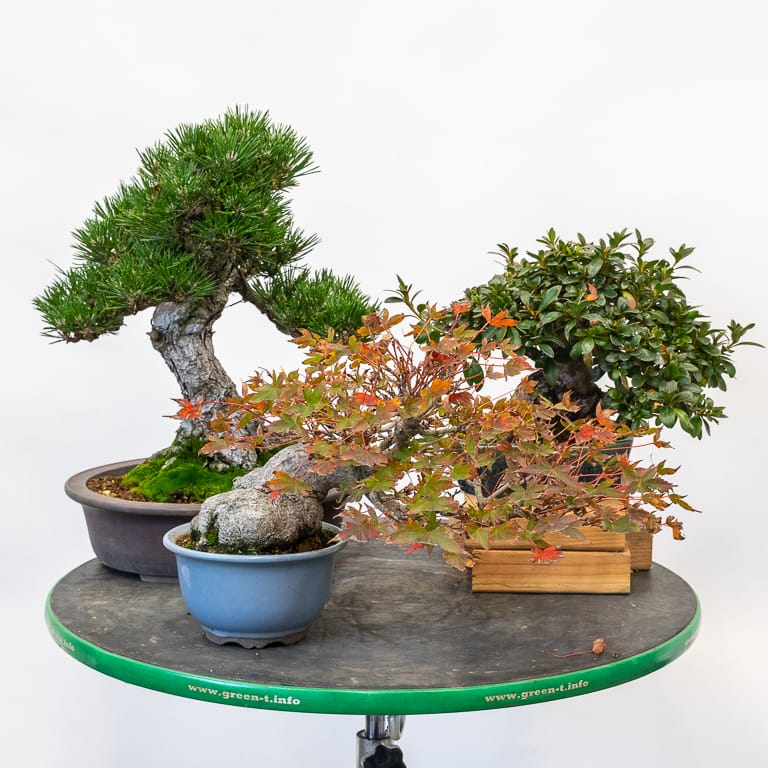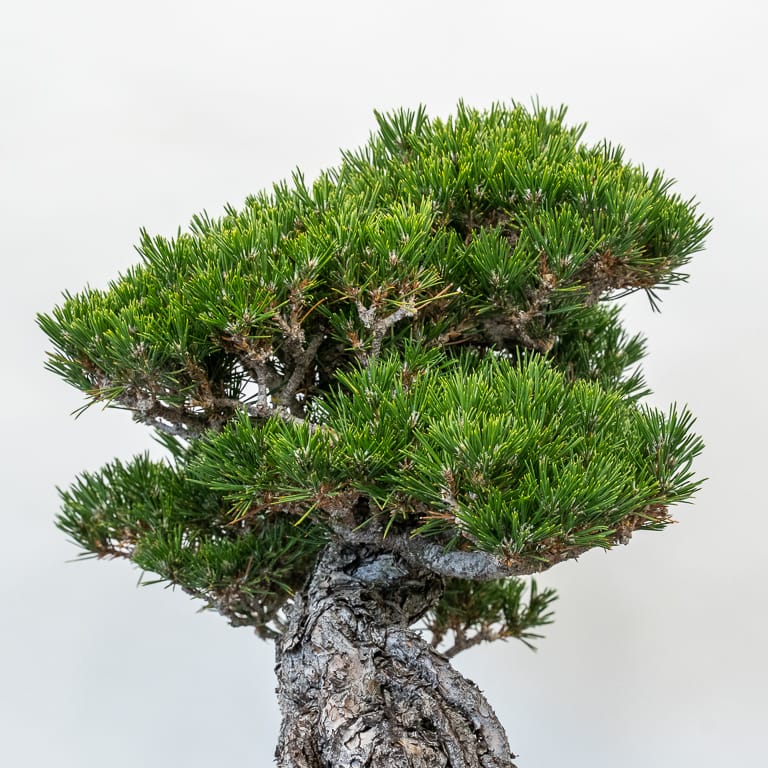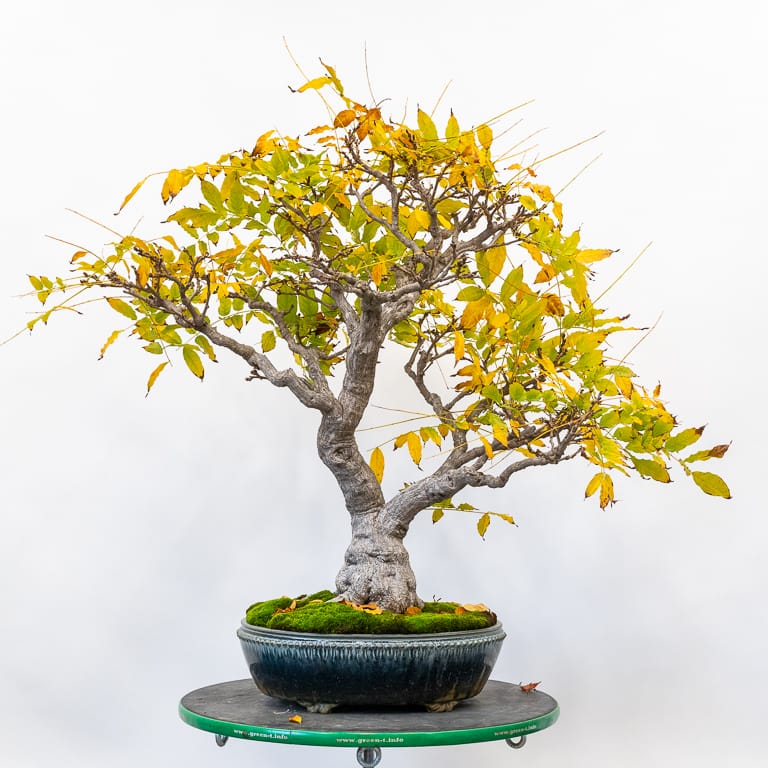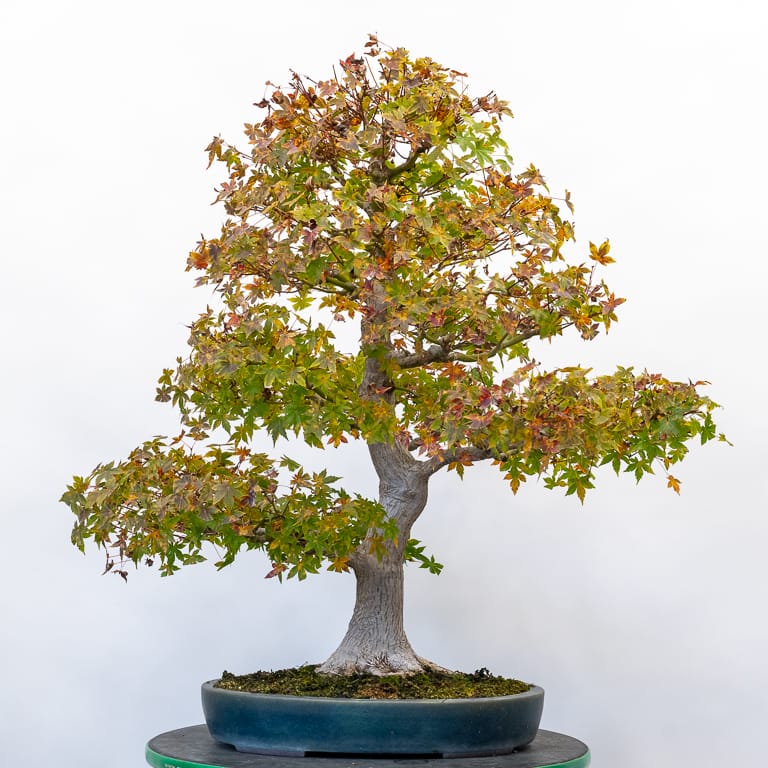It’s been fun to start planning for next year’s Pacific Bonsai Expo. Setting the date, selecting the space, and figuring out how everything will work has been the main focus so far. Now it’s time to start thinking about the trees!
As a juried exhibition, it’s up to the jurors, Bjorn Bjorholm, Ryan Neil, and William N. Valavanis, to determine which trees will be selected for display. It’s up to us, the potential exhibitors, to provide the jurors with the best possible trees to choose from.
I’ve had the idea in the back of my head for some time that I need to start thinking about which trees to submit. Now that the event is one year away, it’s time to line up candidates for submission.
I walked through the garden this week with a clipboard and made a list of all of the trees that I thought could be a good fit for the exhibit. The list was big – twenty trees!

Ready for show? Pine, Japanese maple, and azalea
Next, I took a closer look at the selected trees to see which might be ready for show next year. Many of these trees need extensive wiring but I generally like to show trees with as little wire as possible. I marked eight trees as maybe and will see if I can get them wired ahead of the submission period.

Pine branches in need of wiring
There are also a few trees that may be appropriate for an exhibition, but not necessarily in fall. These include a wisteria, a millettia, and an ume. I may submit these trees as it would be fun to see these species represented, but they will look much better in winter or spring when they start to bloom. I’ll wait to see how the other candidates look before making a decision about these trees.

Wisteria with fall color
That leaves two large deciduous trees and seven small or medium-sized trees. I plan to prepare both large trees for submission. One is a Japanese maple, the other is a European beech. Neither has great fall color so I’d plan to show them without leaves.

Japanese maple with poor fall color
As for the small and medium-sized trees, I need to figure out the most effective way to mix and match them. It’s conventional to display a medium-sized bonsai (trees up to 18″ tall) with a smaller tree, preferably one with a different foliage type (see “Three-point displays” for more about displaying medium-size trees). I’ll write more about this process in a future post.
Now that I have an idea about which trees to prepare ahead of the submission period (February through April, 2022), I can start focusing on finding pots for the trees that need better quality containers.
Have you looked at your collection to identify candidates for submission? Let us know in the comments below!
Subscribe to Indian Bonsai Art
New Posts Delivered Every Tuesday and Friday
Reader Interactions
This site uses Akismet to reduce spam. Learn how your comment data is processed.
